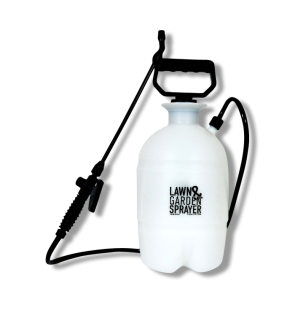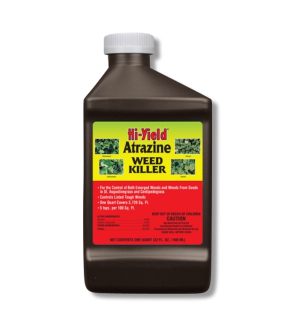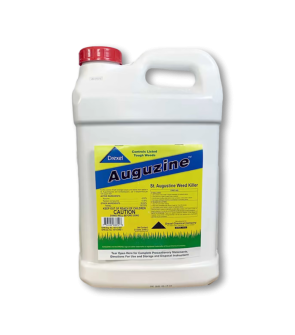Gain access to personalized product screening, the best pricing, rewards, and more!
Most Effective Products
Dichondra Control: How To Get Rid of Dichondra
Dichondra is a broadleaf perennial that spreads via creeping stems that root at the nodes. It forms mats between 1 1/2 and 3 inches tall. Dichondra has normally kidney-shaped to nearly circular leaves that grow alternately, sometimes appearing whorled on the stems. The leaves contain white to greenish, small flowers borne in clusters in the leaf axils below the leaf's level.
Dichondra is cultivated as a ground cover in some states and is also seen as a desirable or decorative type of grass in some areas of the US. However, for most homeowners, its tendency to spread and smother other plants in lawns and gardens is unwanted.
If you have been frustrated with the sight of dichondra on your lawn, our DIY treatment guide can help. Our lawn care experts compiled the guide below and will show you how to properly kill dichondra and remove it from your lawn for good.
Identification
Before carrying out a treatment program, you will need first to be certain that you are dealing with dichondra and not some other weed. Careless identification can lead to using the wrong treatment methods, which can waste time and money. Below are shared traits so you know what dichondra looks like for easy identification.

- Dichondra grows between 1 and 3 inches high, looks almost like a spade, and grows in bunches.
- Dichondra can often be mistaken for dollar weed because of its similar appearance. Like dollar weed, it grows in groups parallel to the soil. Dichondra, though, is smaller and prefers shady, moist lawn areas.
- On the other hand, dollar weed can tolerate a wide variety of soils, temperatures, and water conditions and will populate the entire lawn. Dichondra is usually isolated to a few small preferred spots in the yard where it is thin and poorly maintained.
Use the description above and the images to help you properly identify dichondra and differentiate it from other weeds. If you are having trouble, contact us with an image of the plant you are encountering, and we will help you correctly identify the plant and offer treatment suggestions.
Inspection
Once you have confirmed that you are dealing with dichondra, you can proceed to the inspection. During this phase, you will locate areas where dichondra is thriving and observe the conditions that allow it to thrive. This information will help you know where to focus your herbicide application.

Where to Inspect
Dichondra thrives on lawns and comes up in little bunches. It can spread via tubers, easily popping up everywhere, and invade and take over a whole yard. Dichondra tends to thrive in lawns with spotty turf or weak or thinning in certain areas. Hence, the presence of dichondra may be a sign you are not giving your lawn enough tender love and care.
What to Look For
Its distinguishing traits are the kidney-shaped to nearly circular leaves, which grow opposite each other, sometimes appearing whorled on the stems. The white to greenish, small flowers develop in clusters in the leaf axils below the leaf's level.
Treatment
When applying herbicides, wear protective clothing or safety equipment that covers your arms and legs, gloves, socks, and shoes. Avoid inhaling the spray or getting it in your eyes or mouth.
To eliminate dichondra appearing on your lawn, using a quality herbicide like Celsius WG in the late spring when the weeds are younger and smaller is best. Herbicides are less effective the older and more mature the weed gets.
Step 1: Mix and Apply Celsius WG

Measure the square footage of the treatment area to determine how much Celsius WG you will need. To find the square footage, measure the treatment areas' length and width in feet, then multiply them together (length X width = square footage).
Celsius WG should be mixed with a gallon of water at 0.085 oz. per 1,000 square feet. Mixing Celsius WG with a surfactant like Alligare 90 will help the product stick better to the Dichondra and make the herbicide work more effectively.
For example, if you have a 2,000 sq. ft. area to treat, you must mix 0.17 fl. oz. in 2 gallons of water.
Once you have measured and calculated how much Celsius WG you need, mix the product and surfactant with the appropriate amount of water in a handheld or backpack sprayer. Shake the sprayer to ensure the solution is well-mixed, and then you're ready to spray.
When applying, change the nozzle setting to a fan nozzle so it sprays a fine mist on the dichondra and gets an even coating on the weed.
Step 2: Reapply As Needed

If a second application is needed, apply the herbicide in spot treatments. Repeated applications of Celsius WG should be spaced according to the label directions (normally every 2 to 4 weeks after the first application). Be careful applying in the heat, and just spot-treat the area so you don't burn your grass.
Prevention
After eliminating the dichondra, you don't want it to pop up and make a return. Dichondra thrives on thinning turf that isn't getting sufficient nutrition. Here are some preventative measures to take to keep dichondra away.
- The best defense against dichondra making a comeback is promoting a thick lawn that is well fertilized and maintained, and moisture issues are addressed.
- Implement proper cultural lawn care maintenance practices, such as infrequent watering (1 to 1.5 inches once a week), mowing high (3 to 4 inches in height), and fertilizing, will go a long way toward keeping your lawn strong enough to withstand dichondra and other invasive weeds during the growing season.
Key Takeaways
What is Dichondra?
- Dichondra is a plant with kidney-shaped leaves that can grow and cover a large area in very little time if there is no intervention to stop it.
How To Get Rid of Dichondra
- Our top recommendation for treating dichondra is Celsius WG Herbicide. Make a spot treatment of Celsius WG to the areas where Dichondra is thriving and reapply as needed 2 to 4 weeks later.
Preventing Dichondra Reemergence
- By maintaining a regular lawn care schedule and promoting lush, green, nutrient-rich turf, dichondra will have a hard time re-emerging on your lawn.













